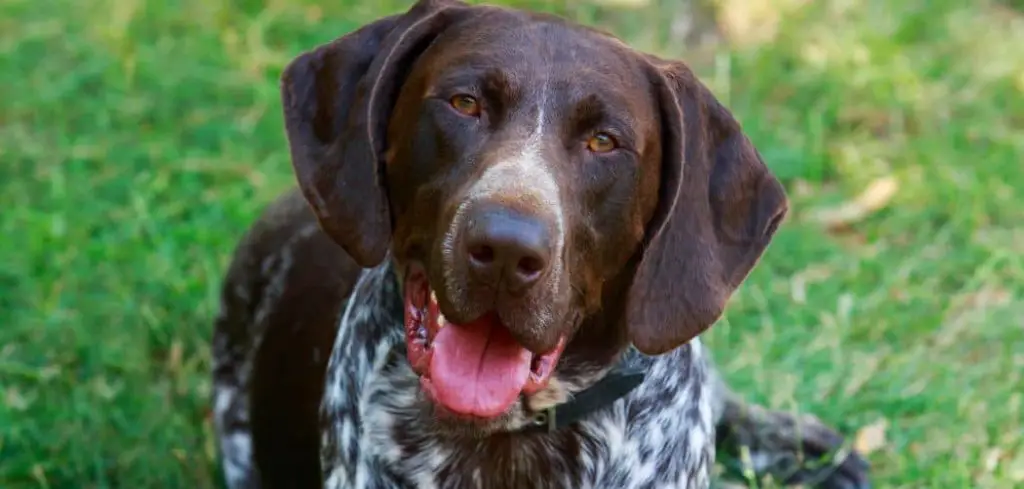Panting in older dogs can signal more than just normal heat regulation. When an old dog keeps panting excessively or without obvious triggers, it may point to underlying health issues or discomfort.
We outline the common reasons why an old dog may keep panting, what you can do at home, and when to seek veterinary help.
Old Dog Keeps Panting — Why It Happens
An old dog may keep panting because their body has a harder time regulating temperature, or due to underlying health issues. Common causes include heat or overexertion, pain, heart or lung disease, respiratory problems, hormonal conditions like Cushing’s disease, or side effects from medications. Anxiety and stress can also trigger panting in senior dogs.
If your dog is panting heavily, at rest, or more than usual, it’s important to see a vet to rule out serious conditions and ensure they stay comfortable and safe.

Old Dog Keeps Panting: Common Causes
Heart Disease
Heart conditions, including congestive heart failure, can make breathing difficult and trigger excessive panting.
Owners may notice fatigue, coughing, or reduced activity levels. Panting results from the heart’s reduced efficiency in circulating blood, leading to shortness of breath. Early diagnosis and treatment can significantly improve quality of life.
Read more: Old Dog Panting Excessively at Night (Causes and Relief Tips)
Respiratory Disorders
Chronic bronchitis, pneumonia, or other lung diseases can cause an old dog to pant more frequently.
Symptoms often include coughing, wheezing, and difficulty breathing. Because respiratory problems can rapidly worsen, prompt evaluation and treatment are important for older dogs.
Pain or Discomfort
Arthritis, dental issues, or internal discomfort can cause panting in senior dogs.
Dogs may also show restlessness, limping, or reluctance to move. Panting in this context is often a stress response to chronic pain, making pain management and veterinary guidance essential.
Anxiety or Stress
Separation anxiety, new environments, or changes in routine can increase panting in older dogs.
Signs may include pacing, whining, drooling, or restlessness. Behavioral support, environmental enrichment, and reassurance from owners can help alleviate anxiety-related panting.
Cushing’s Disease
An overactive adrenal gland producing excess cortisol can lead to panting in senior dogs.
Other indicators include increased thirst, urination, and a pot-bellied appearance. Veterinary assessment is necessary to confirm the diagnosis and manage the condition effectively.
Heat or Environmental Factors
High temperatures, humidity, or excessive exercise can trigger panting.
Older dogs are less able to regulate body temperature efficiently. Providing shade, cool water, and limiting strenuous activity can help prevent heat-related panting.
What to Do If Your Old Dog Keeps Panting
Monitor your dog’s panting patterns and note any triggers or changes in intensity.
Ensure your dog has access to fresh water and a cool, shaded area, especially in warm weather.
Minimize stressors and maintain a calm environment to reduce anxiety-induced panting.
Support mobility and comfort if pain or arthritis is suspected, using soft bedding and gentle exercise.
Consult your veterinarian before giving medications or supplements, as older dogs may have underlying conditions requiring professional guidance.
When to Call or Visit Your Vet
Seek immediate attention if panting is accompanied by labored breathing, blue gums, collapse, or unresponsiveness.
Persistent panting with vomiting, diarrhea, lethargy, or sudden behavior changes warrants urgent veterinary evaluation.
Dogs with known heart, lung, or endocrine disorders should be examined promptly if new or worsening panting develops.
A veterinarian can perform physical exams, blood tests, chest X-rays, and other diagnostics to identify the root cause and recommend treatment.
Read more: Old dog panting and not eating (Learn what it means)
Key Takeaway
Excessive panting in older dogs can indicate medical issues, stress, pain, or environmental discomfort. Observing patterns, keeping your dog comfortable, and reducing stress are key first steps.
Prompt veterinary evaluation ensures accurate diagnosis and effective management, allowing your senior dog to breathe easier and remain comfortable.
Attentive care helps maintain both their health and peace of mind for you as an owner.
